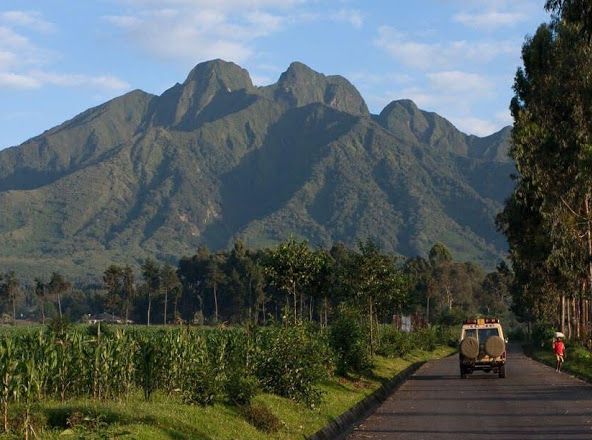THE VIRUNGA MASSIF: VOLCANOES NATIONAL PARK & MGAHINGA NATIONAL PARK.
Volcanoes National Park in Rwanda and Mgahinga Gorilla National Park in Uganda are integral parts of the Virunga Massif, a chain of dormant volcanoes spanning the borders of Rwanda, Uganda, and the Democratic Republic of the Congo. These parks are renowned for their shared ecosystems, particularly as habitats for the endangered mountain gorilla, and their collaborative conservation efforts.
Shared Geography: The Virunga Massif
Both parks are situated within the Virunga Mountains, a series of eight volcanoes that form part of the Albertine Rift. Mgahinga encompasses three of these volcanoes: Mount Muhabura (4,127 m), Mount Gahinga (3,474 m), and Mount Sabyinyo (3,669 m). These landforms are typical of volcanic eruptions along the rift valley area. The parks’ contiguous nature allows for shared wildlife corridors and ecological continuity, essential for species like the mountain gorilla that traverse these borders.
Conservation Efforts and Gorilla Habitats
Both parks are critical sanctuaries for the endangered mountain gorilla. Volcanoes National Park hosts approximately 10 habituated gorilla families, while Mgahinga is home to one habituated group, offering a more exclusive trekking experience. The collaborative conservation strategies between the parks have been instrumental in the gradual increase of the mountain gorilla population.
Cultural Significance and Community Engagement
The establishment of these parks has had profound impacts on indigenous communities, particularly the Batwa people, who were displaced from their ancestral forests. Initiatives like the Gahinga Batwa Village resettlement project in Uganda aim to empower these communities by preserving their culture and promoting sustainable tourism. Such efforts not only support the Batwa but also enhance conservation outcomes by involving local communities in protecting their natural heritage.
Tourism and Economic Impact
Gorilla trekking is a significant draw for both parks, contributing substantially to their respective national economies. In Rwanda, gorilla trekking permits are priced at $1,500, with proceeds supporting conservation and community development. Uganda offers permits at $800, making Mgahinga an attractive option for budget-conscious travelers. The revenue generated from tourism is reinvested into park management and local infrastructure, fostering a sustainable model that benefits both wildlife and people.
Conclusion
Volcanoes National Park and Mgahinga Gorilla National Park are more than just neighboring reserves; they are collaborative guardians of a unique and fragile ecosystem. Their intertwined geographies, shared conservation goals, and joint community initiatives exemplify the power of cross-border cooperation in preserving our planet’s biodiversity


Comment (0)